
I’m a little late getting this article online. Summer kinda leap-frogged spring this year and took me by surprise. A late spring cold snap gave way to a early heatwave, and then on into summer. I wanted to make this post while the weather was still somewhat cool, so that winter wouldn’t seem like such a distant memory. I definitely missed my chance for that, but I’m not going let that stop me from sharing a season’s worth of pictures and video with you. Let’s take a look back at the urban wildlife of this past winter!
This winter, trail cameras became a more important part of my repertoire, and I had a lot fun with them this year. As the weather started to cool off late last year, I got out and dropped off some cameras in a several choice wilderness areas around town. The results were exciting.
My new Bushnell Aggressors have opened up a whole new dimension to my camera trapping efforts. Their wireless function gives me near instant feedback, and allows me to make adjustments to the sets remotely—something that has allowed me to improve my results notably.
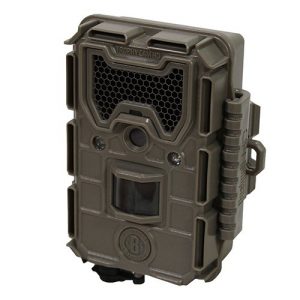
I began using another Bushnell trail camera this past winter as well—the Trophy Cam 20MP. This camera records fantastic pictures and stellar high definition video. I’ve only begun to explore the possibilities, but already I am impressed. I can’t wait to share these pictures and video with you. I recorded a bounty of interesting photos as the winter went along.
In the hopes of finding interesting wildlife, I set several of my trail cameras deep in the Trinity River bottoms. I placed others in remote and hidden coves on local reservoirs. Each location required a relatively long hike to reach, so each time I went out to check my sets, I brought my DSLR Camera or handy Canon SX60 along with me. There were always plenty of opportunities to photograph interesting and unique wildlife while traveling to and from. I’ll share those pictures here with you as well.

One of my most productive trail camera sets was located on a small pond deep in the woods near Lewisville Lake. The pond had a history. It was the remnants of an old cattle tank created by laying an earthen mound across a ravine leading to the lake. This spot was fascinating in the wildlife it attracted. Deer, Bobcats, Coyotes, Raccoons, and other made appearances. The water was a draw for a number of different bird species as well. The video below reveals some of the activity that occurred around the pond late at night…
There was plenty of deer sign in this area as well. It was easy to tell that they visited the pond frequently. I setup a couple of my cameras with the hopes of recording samples of the deer’s behavior around the water. I was very pleased to get this set of photographs…
Periodically, over the course of several weeks, I would move the cameras to new locations around the old cattle tank. Each new set produced intriguing pictures and video. Here is a sampling of some of the more interesting visitors we recorded at this location…
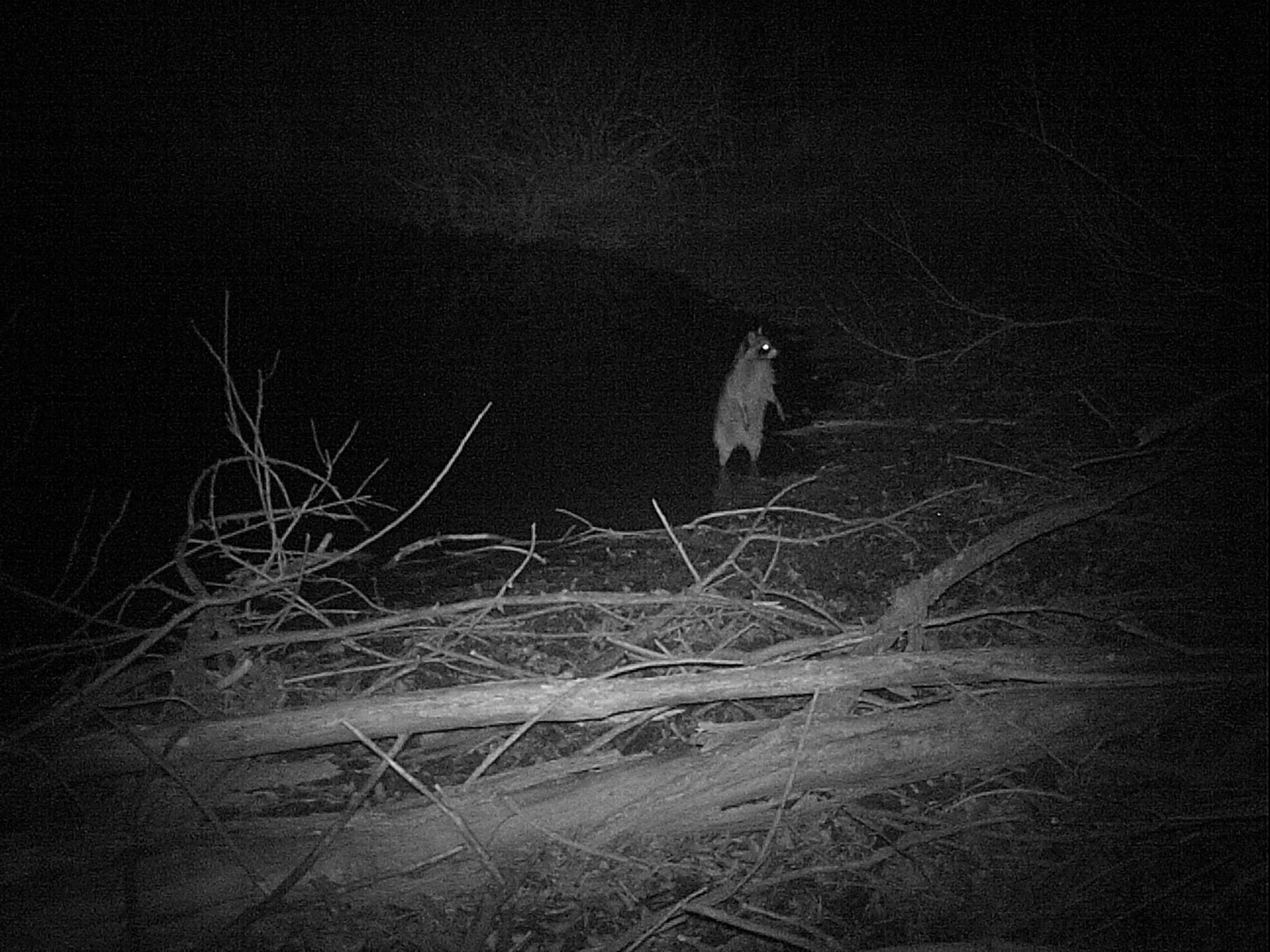

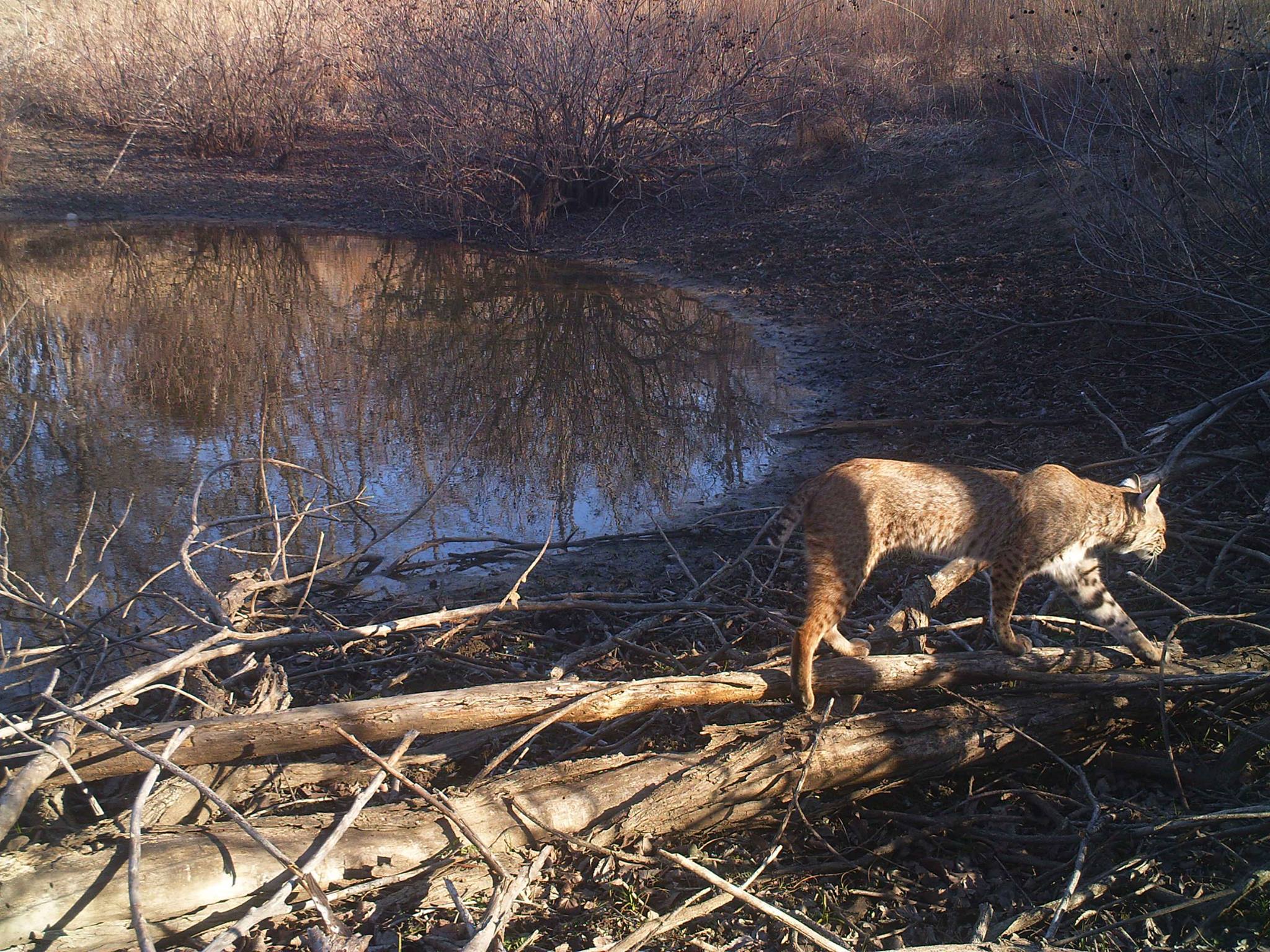

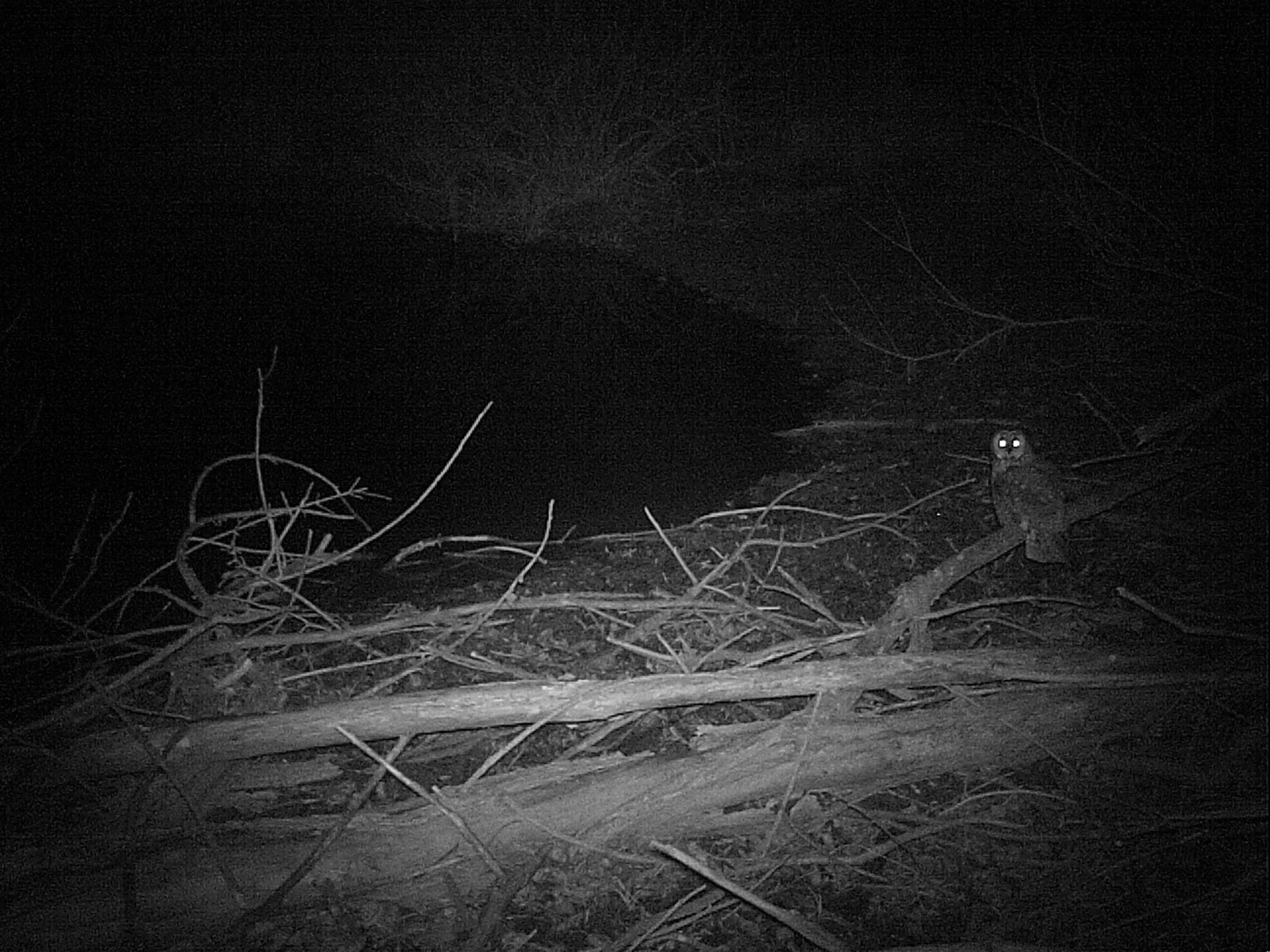
A little further down the gulch from this pond, I set another trail camera to monitor a mud flat on a small inlet on Lewisville Lake. This was a very active spot. White-tailed Deer, Coyotes and Bobcats passed in front of the camera with amazing regularity. The repeat visits, under similar lighting conditions, allowed me to combine many of these pictures into some illustrative composite photos. The juxtaposition of these different pictures informs nicely the relative size of these animals to each other. Combining multiple images of the same few Coyotes demonstrates just how active these animals were on this mud flat.
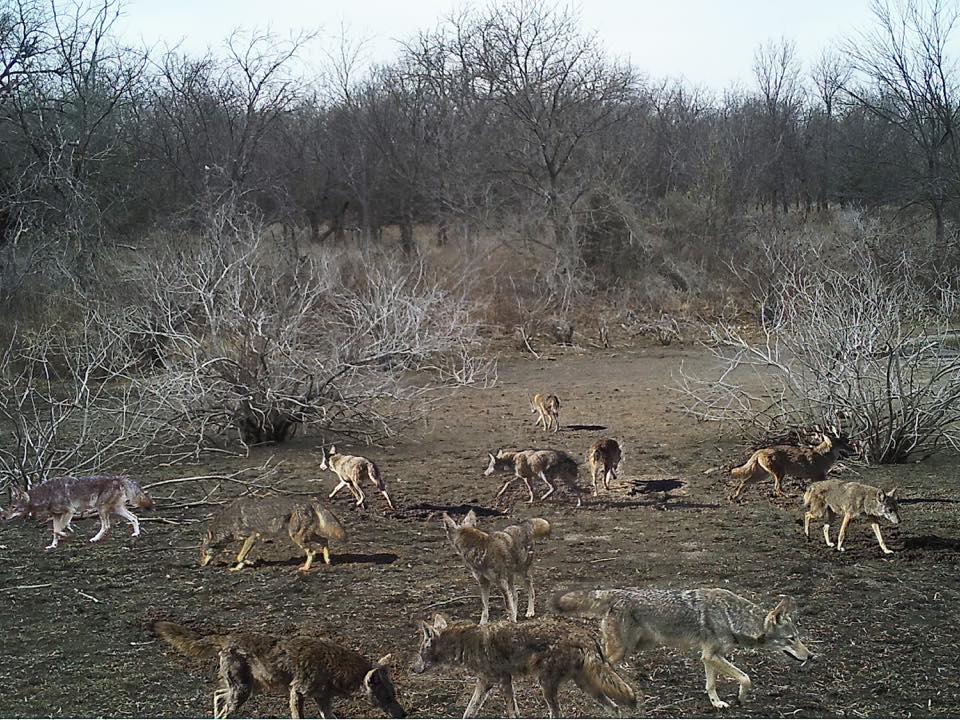

In the meadow above the cattle tank I set a few trail cameras along a well worn game trail. This little path sported deer rubs every few dozen yards—a clear sign there were lots of deer on this property. Wikipedia describes deer rubs in this way…
A deer rub describes the abrasions caused by a male deer rubbing his forehead and antlers against the base of a tree. Easy to spot in areas with high deer populations, hunters use them to find ideal locations for hunting. They appear in the late summer or early fall, when male deer rub the velvet off their newly acquired antler growth or during rut season. The area between the forehead and antlers contains a large number of apocrine sweat glands, and leave a scent that communicates a challenge to other male deer while also attracting potential mates. The size of the rub usually varies with the size of the deer.
Every year male White-tail Deer spar with each other in a quest for dominance and mating rights. The rut, as this season is known, can be grueling for bucks. The energy demands are high, and the need for constant perseverance leaves little opportunity for replenishment. The bucks do battle with their antlers, and the threat of serious injury is always present.
In January, one of my trail cameras recorded these pictures of a ragtag pair of male deer. Both have seen their fair share of action, but one has come away from this year’s rut with a permanent disability. Notice the lack of reflective shine from the left eye of the larger deer. This fellow has lost his eye, most likely during a heated sparring match with another buck.

Over the course of the rest of the winter, my cameras photographed this deer in a number of different locations on this property. The evidence would suggest that the deer has largely recovered from his severe injury, and is making his way with some success. Even so, this hardy buck will face many more challenges in his remaining years.
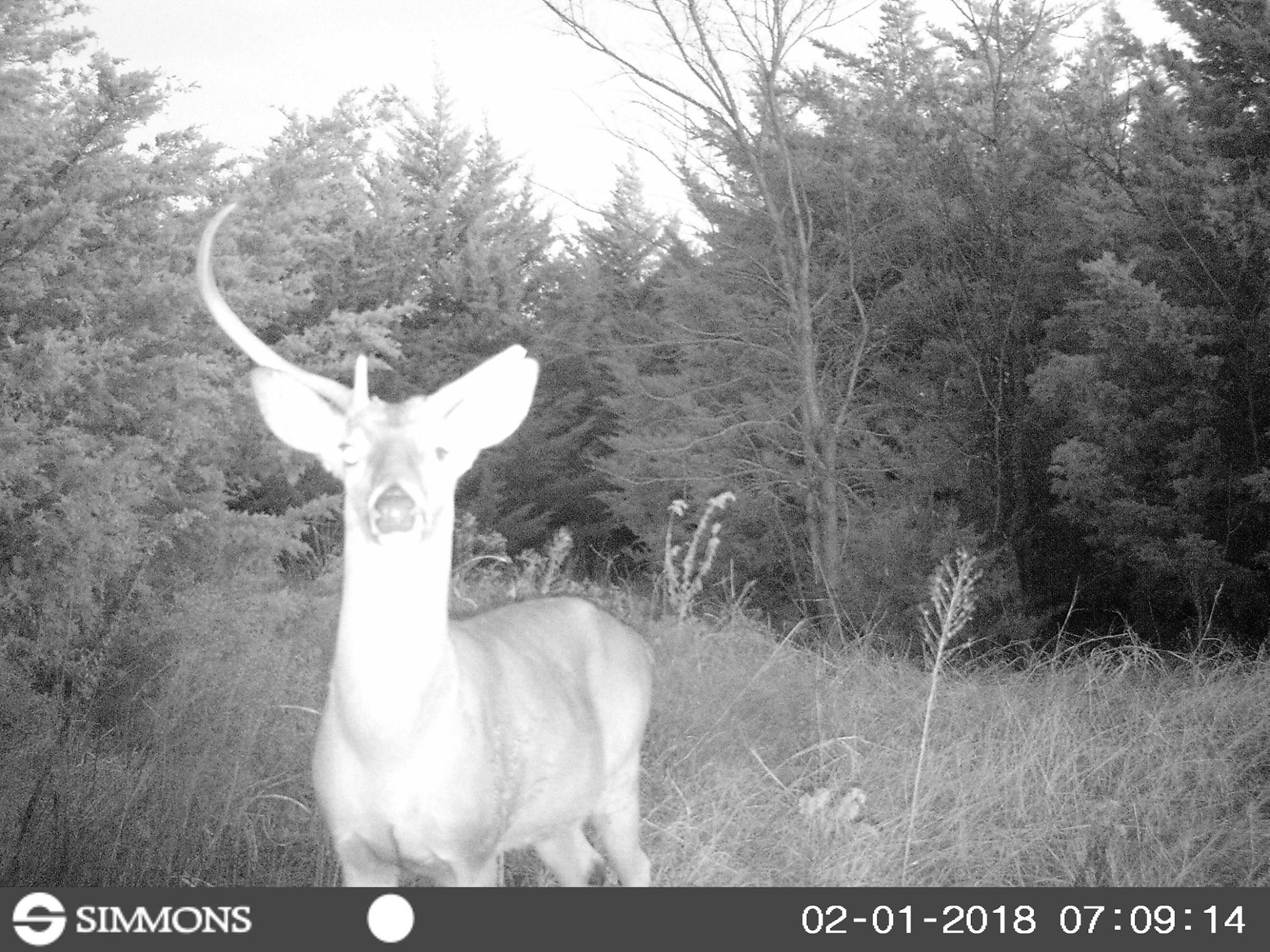
Down by the river I went in search of the rarely seen North American River Otter, among others. I found a wonderful spot on the bank of the river by following a small—but well used—game trail into the woods. The trail terminated at a busy Beaver takeout on the River’s edge. This muddy shelf jutted out into the murky river water and provided an excellent place for aquatic mammals to put in and haul themselves out. The takeout also facilitated the investigation of the river water by more terrestrial critters. All in all, this was a tremendously active spot. When you watch the videos below, you might glimpse intriguing hints that a River Otter might actually be present at this location. It would take a few photographic stills to be absolutely certain…
Here is one of our mystery guests. I give you Mr. River Otter…


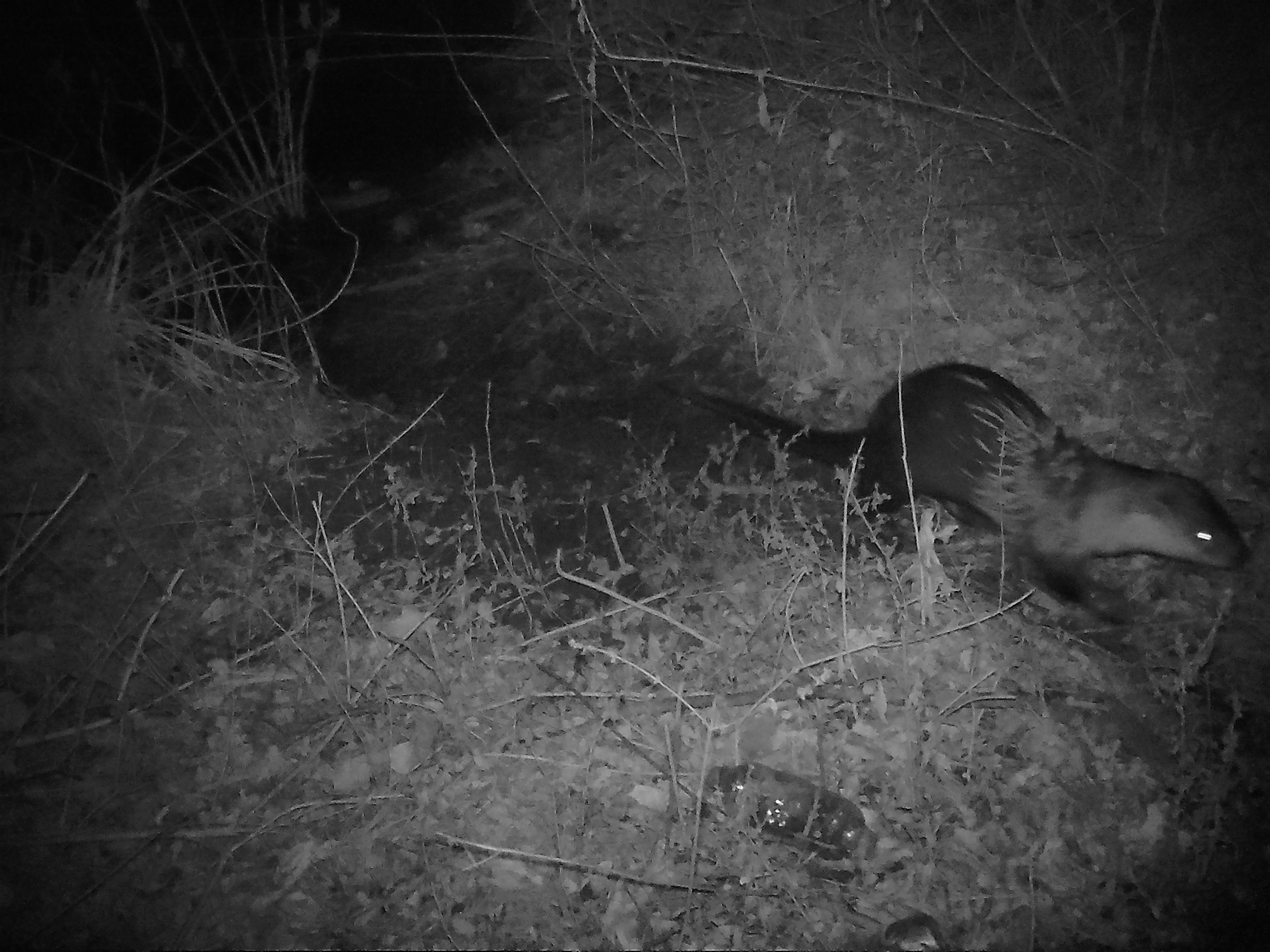
And here are a few shots of some of the other regular visitors…
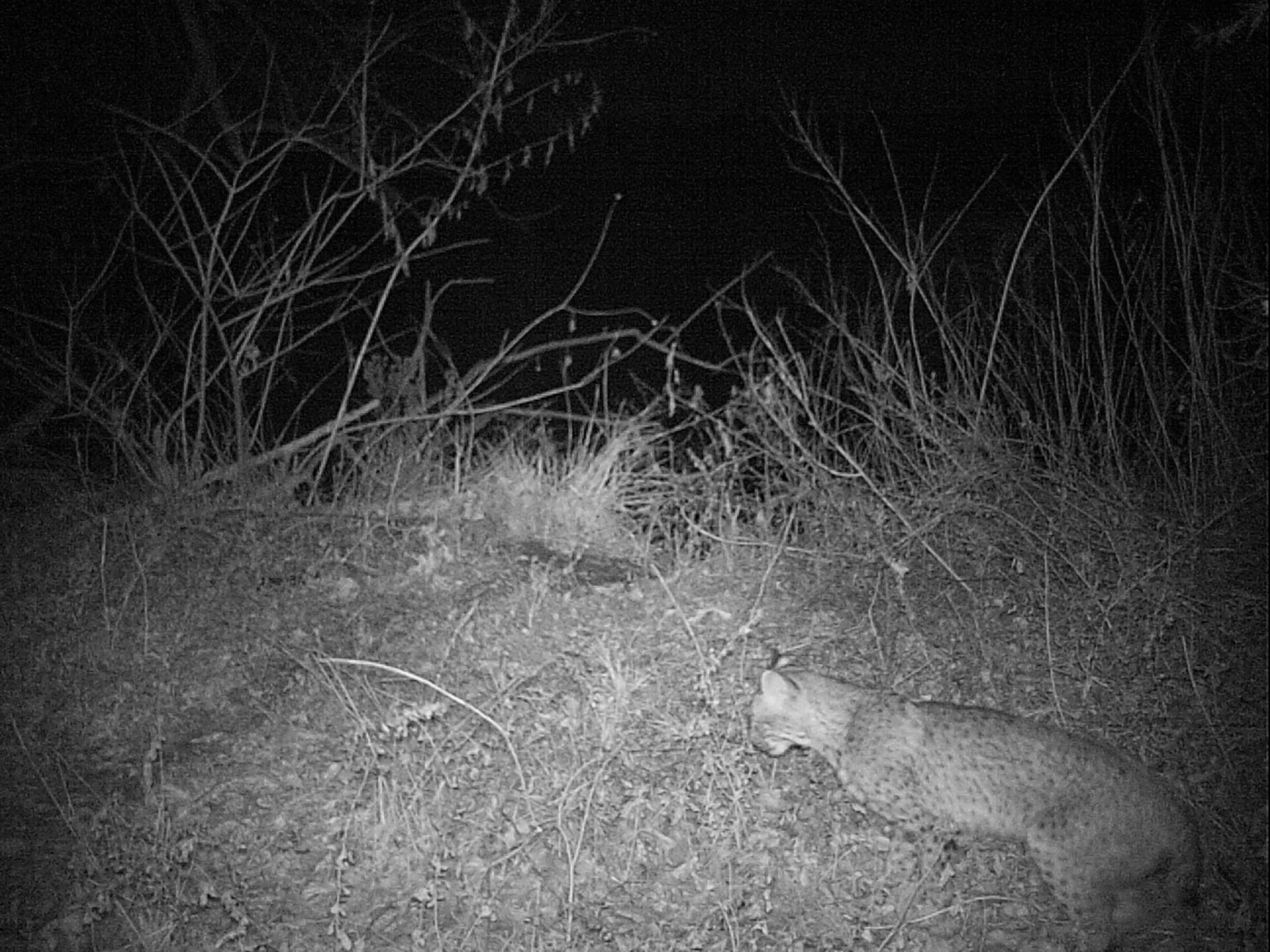
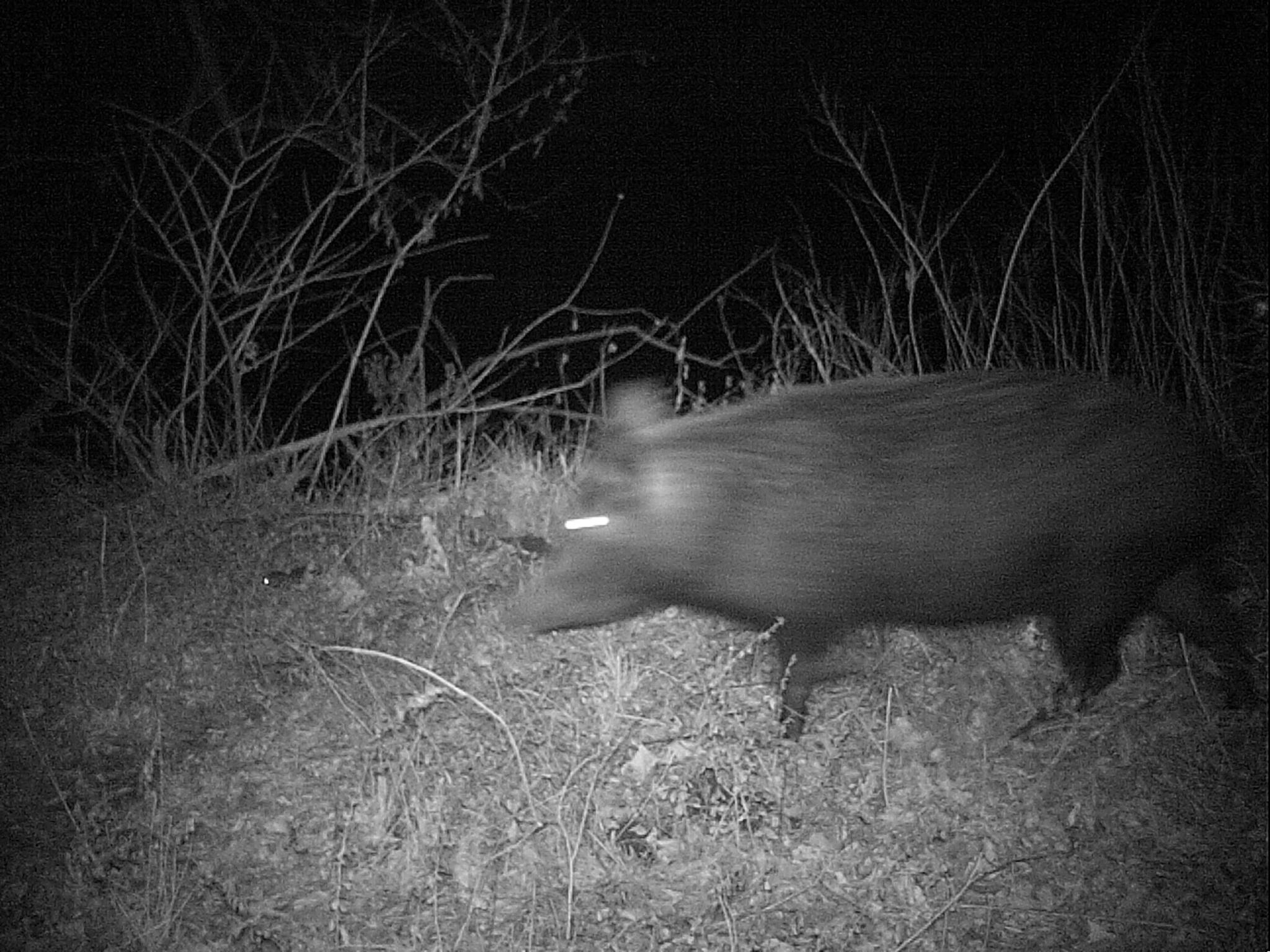


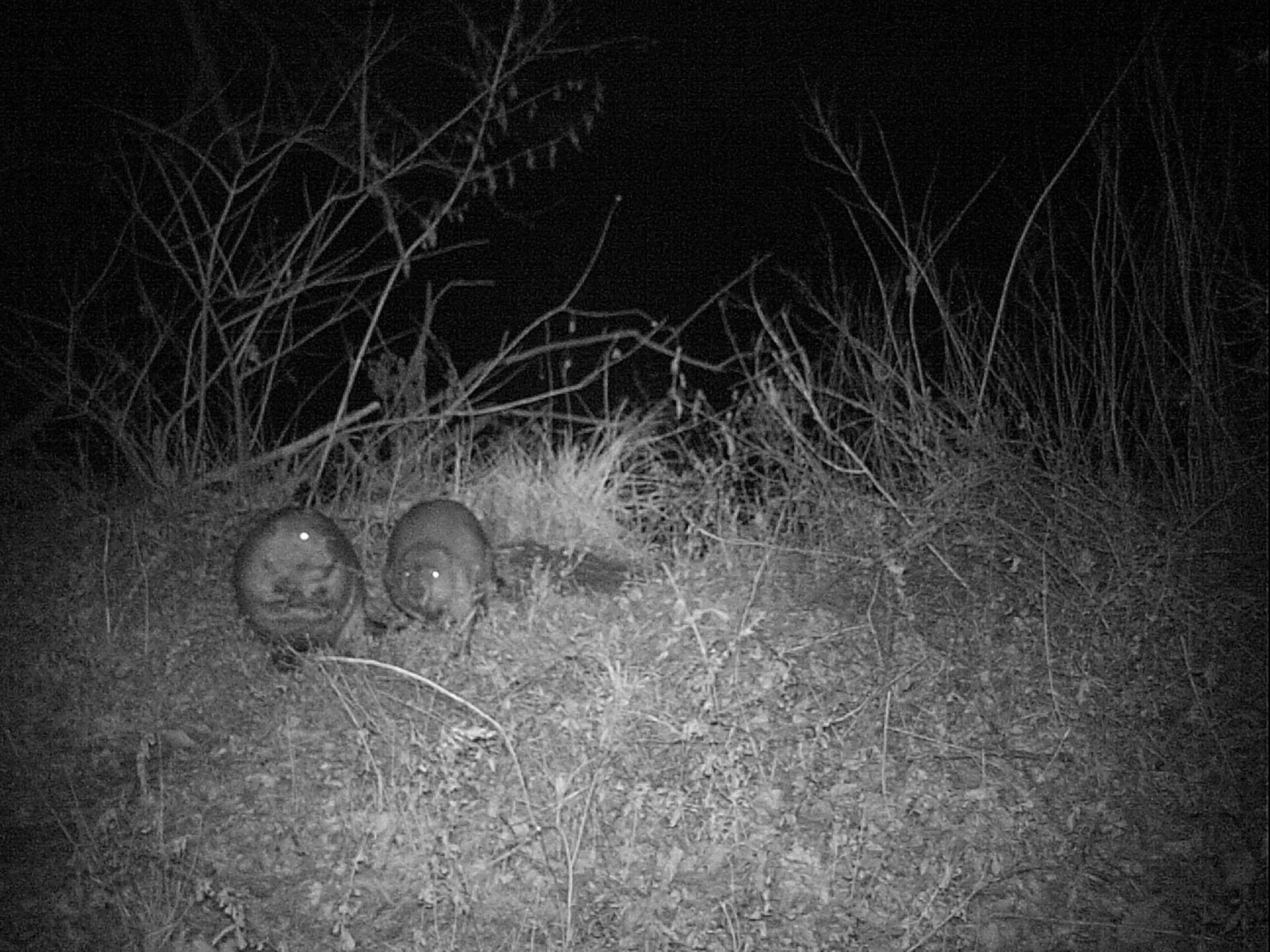


One of the most remote location I placed cameras in was—somewhat counter-intuitively—also one of the least productive. This is were I tested out my new 20MP Bushnells. Like I mentioned earlier, I was very impressed with their performance.
When it comes to DFW urban wildlife, the one, always dependable constant is the presents of Raccoons. These wily critters are superbly adaptable to urban living and as a result they are ubiquitous all across the metroplex. My trail camera sets proved this out on many occasions.
Raccoons live out lives filled with Raccoon-sized drama. Like all wildlife, they stoically soldier on regardless of the challenges put in their way. The video below reveals a pair of Raccoons who regularly patrolled the water’s edge at this location. One has a bad foot and a noticeable limp. Still he carries on, no doubt aided by the support and companionship provided by his associate.
Most trail cameras these days rely on infrared lighting for recording images after dark. The steady light provided by infrared LEDs is thought to be less startling to the animals in front of the camera than a bright white flash would be. Pictures taken using infrared produce black and white images. The quality of which is better under some conditions than others. Often, at the transition between day and night, when there is still a little ambient light, stunning and evocative pictures can be captured. I love the gauzy softness of the pictures taken under these conditions.

In this same general location, my cameras recorded evidence of a population of White-tailed Deer living in these woods. The picture below was recorded the furthermost south on the Trinity River of any I have taken on the north side of the downtown Dallas. An important discovery to communicate—if you are able to unravel the confusing sentence describing it.
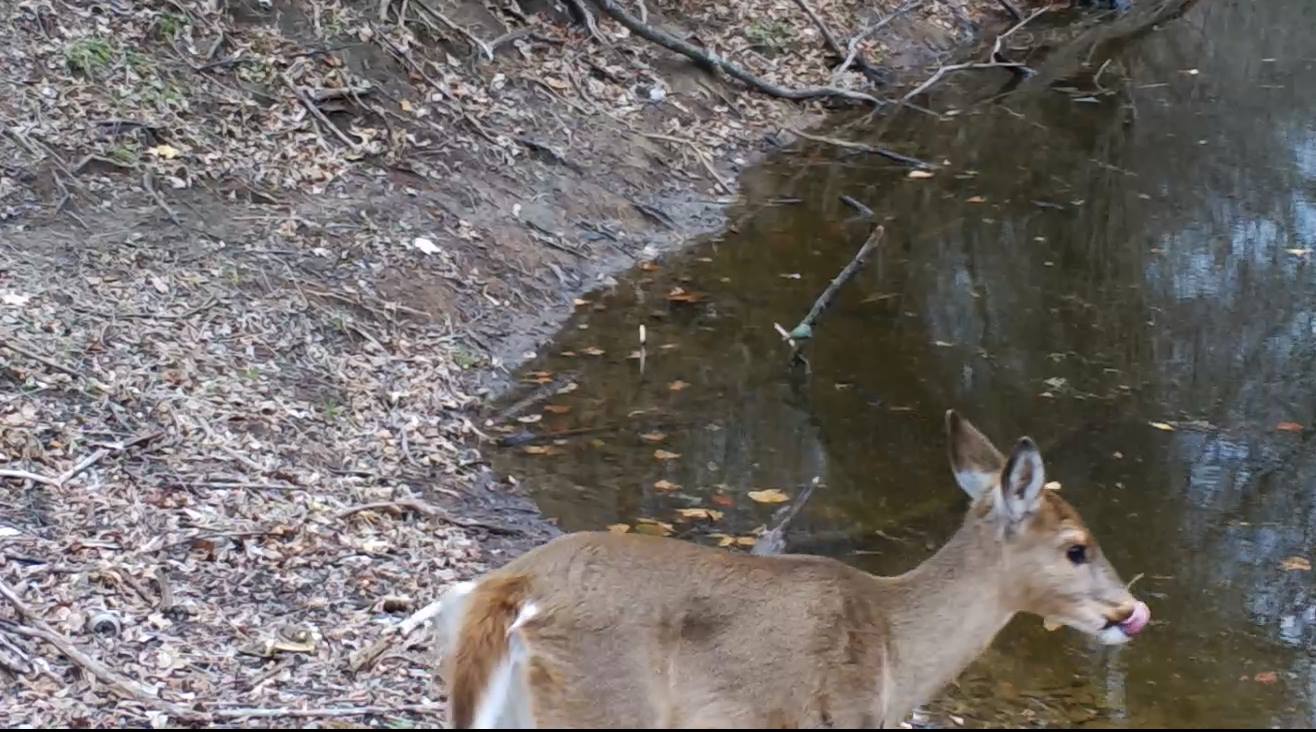
Not all of camera trapping this winter took place in remote locations. For a few days, I left a pair of cameras to watch a Beaver takeout on the creek in our neighborhood greenbelt. These cameras recorded some of the most interesting pictures taken anywhere, all winter long. Here is a small sampling…





Now lets talk about some of the wildlife found trekking to and from my trail camera sets. Possibly the most interesting find was this Peregrine Falcon stationed close to the Trinity River.
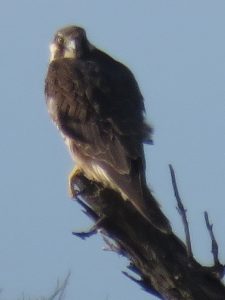
These rarely seen winter migrants are big and beautiful raptors. They hunt other birds by diving on their unsuspecting prey from on high. Here is what Wikipedia has to say about this fascinating raptor:
The peregrine falcon (Falco peregrinus), also known as the peregrine, and historically as the duck hawk in North America, is a widespread bird of prey in the family Falconidae. A large, crow-sized falcon, it has a blue-grey back, barred white underparts, and a black head. As is typical of bird-eating raptors, peregrine falcons are sexually dimorphic, with females being considerably larger than males. The peregrine is renowned for its speed, reaching over 320 km/h (200 mph) during its characteristic hunting stoop (high speed dive), making it the fastest member of the animal kingdom. According to a National Geographic TV programme, the highest measured speed of a peregrine falcon is 389 km/h (242 mph).
Somewhat embarrassingly, I did not recognize this bird as a Peregrine until I review my pictures on the computer at home. When I first spotted this bird hundreds of yards away and perched in a tree, I assumed it was just another of our very common Red-tailed Hawks. I snapped a couple of pictures—just like I always do—on the off chance there was something more interesting going on that I couldn’t see at distance. Boy, I’m glad I did!


As I passed by the falcon’s perch, I watched as he drew the attention of a group of American Crows. The crows jumped at the opportunity to mob this bird of prey, exposed as he was high on a bare branch. It was not long before the big black birds had driven him off into the woods near the river.
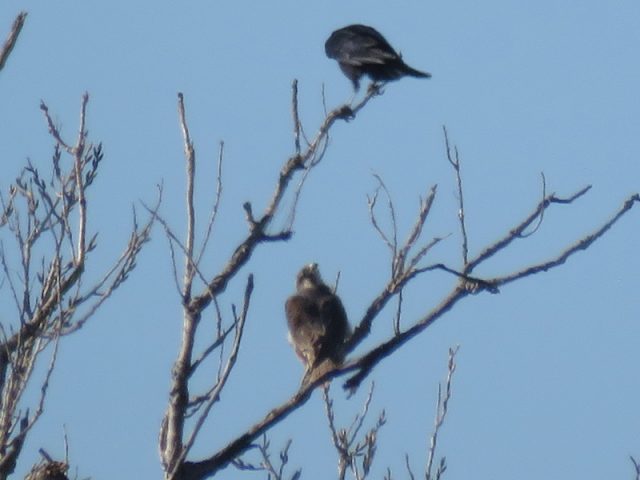
Later, when I was walking back out, I caught another glimpse of the falcon. This time he was flying up and down the river, acrobatically maneuvering in a way that I recognized as unusual, even though I still was not sure what kind of bird I was observing. Nonetheless, I could tell this was something different.
Then there was another time when I pulled into a parking lot to begin a trek into the woods and I encountered these two Loggerhead Shrikes. It’s not often that I come across these birds. To find a pair together was a real treat. If you are not familiar with these fascinating little birds, you should read up on them a bit. They have some very interesting behaviors. Here is a blurb from Wikipedia to wet your appetite…
The loggerhead shrike (Lanius ludovicianus) is a passerine bird. It is the only member of the shrike family endemic to North America; the related northern shrike (L. borealis) occurs north of its range but also in the eastern Palearctic. It is nicknamed the butcherbird after its carnivorous tendencies, as it consumes prey such as amphibians, insects, lizards, small mammals and small birds, and some prey end up displayed and stored at a site, for example in a tree. Due to its small size and weak talons, this predatory bird relies on impaling its prey upon thorns or barbed wire for facilitated consumption. The numbers of Loggerhead shrike have significantly decreased in recent years, especially in Midwestern, New England and Mid-Atlantic areas.


Sometime early in the winter I came across this off-season raptor nest. A nest of this size, in a location like this one, almost certainly be longed to either Red-tailed Hawks or a pair of Great Horned Owls.
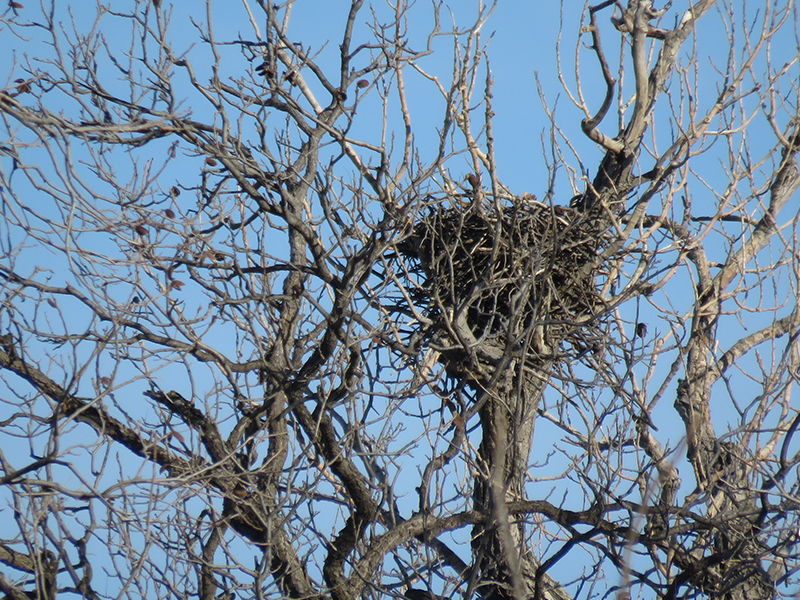
One trait most raptors share is an inclination to use the same nesting site year after year. The only prerequisites are that the nest produces a successful brood and the mated pair stays healthy in the off-season. With good fortune, the same mated pair of raptors will attempt to use the same nesting location annually. This is true of both hawks and owls.
The wildcard, though, is that Great Horned Owl do not make their own nests. Instead, these big owls seek out the nests of other, suitably large birds—such as Red-tailed Hawks or Great Blue Herons—and take them over. Because Great Horned Owls begin breeding much earlier in the season than these other birds, a nest takeover can go largely uncontested.
But, here in the metroplex, we have witnessed Red-tailed Hawks and Great Horned Owls trade off ownership of a prime nesting location year after year. When I discovered this nest, I wondered which big raptor would be making use of it. A few weeks later I got my first hint. In early January, I caught a pair of Red-tailed Hawks giving the nest a thorough once over. I thought I had my answer.
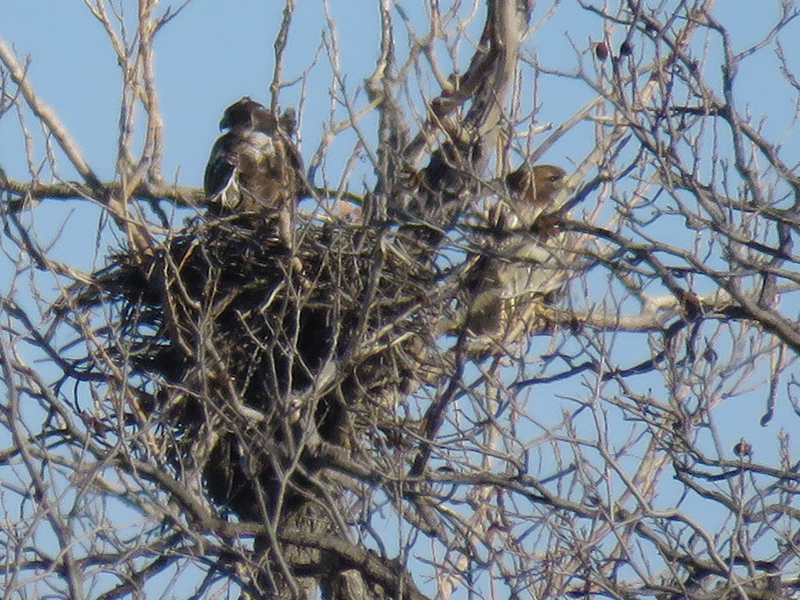
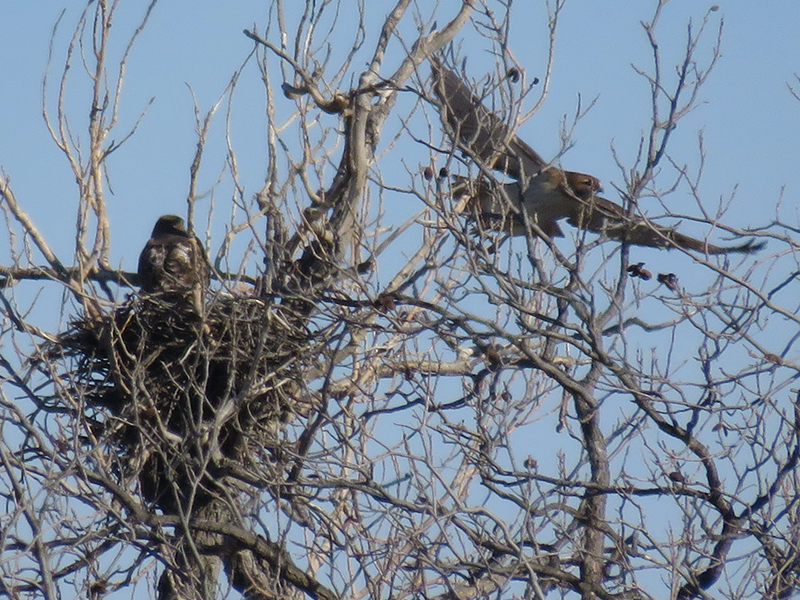
This was very early in the season, though. Too early for Red-tails to be settling on a nesting spot. On repeat visits, I found the nest empty. The opportunity for early nesting Great Horned Owls to make use of the nest also came and went. Then the season for Red-tailed Hawks also passed. In the end, the nest went unused this season. I’ll check on it again next winter!
Here is a sampling of some of the other interesting critters I came across on the way to check my trail cameras…
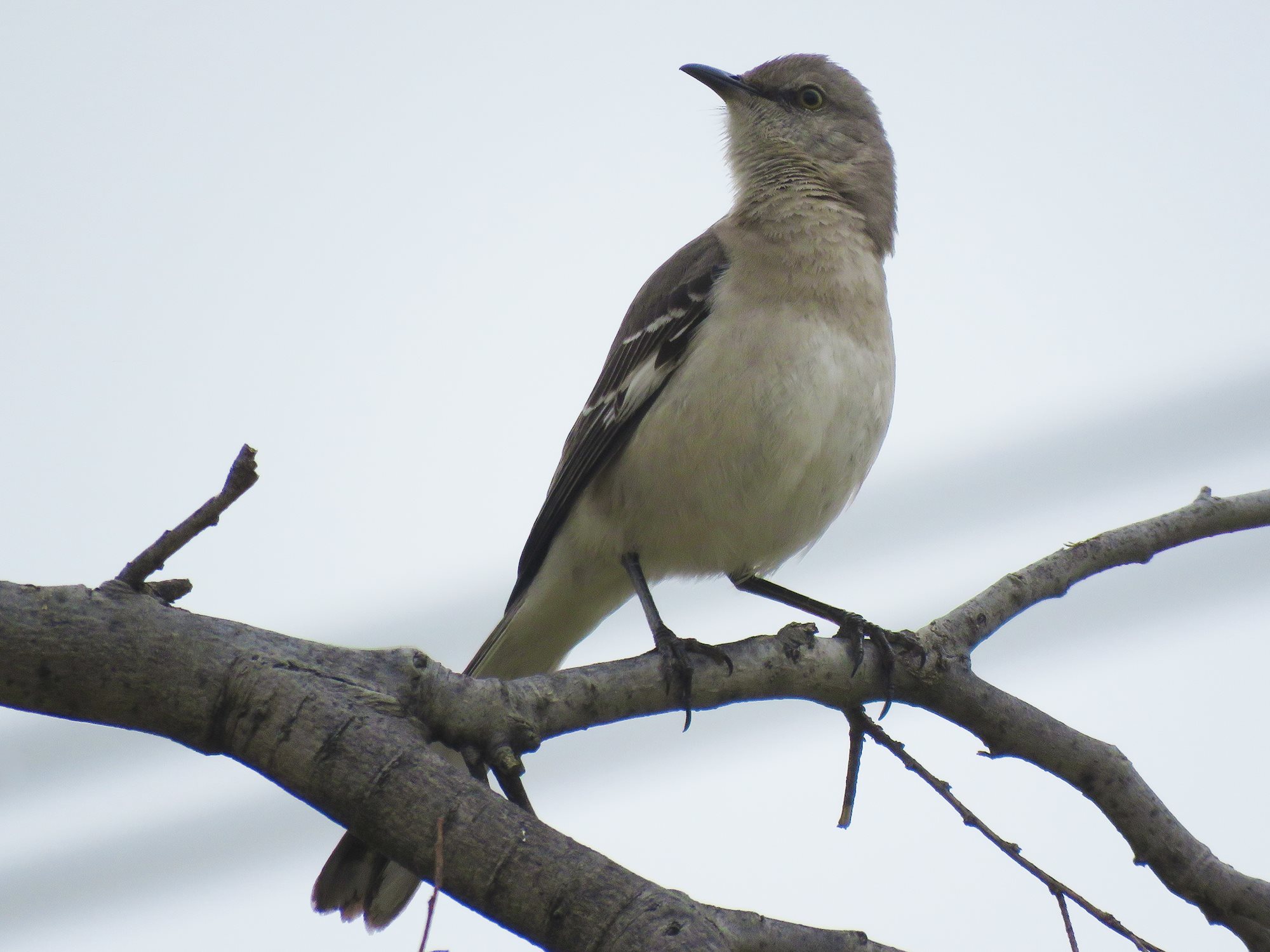

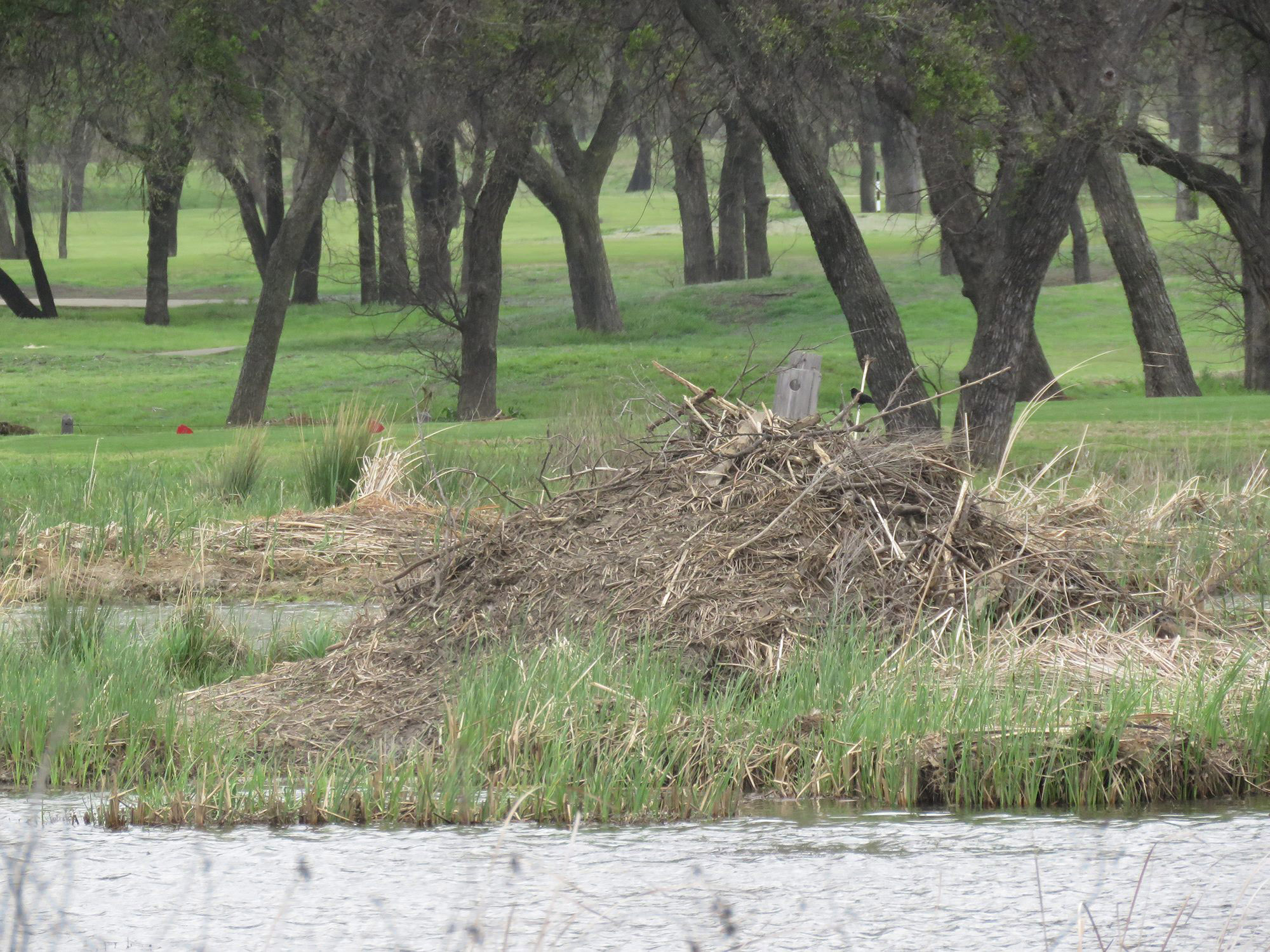

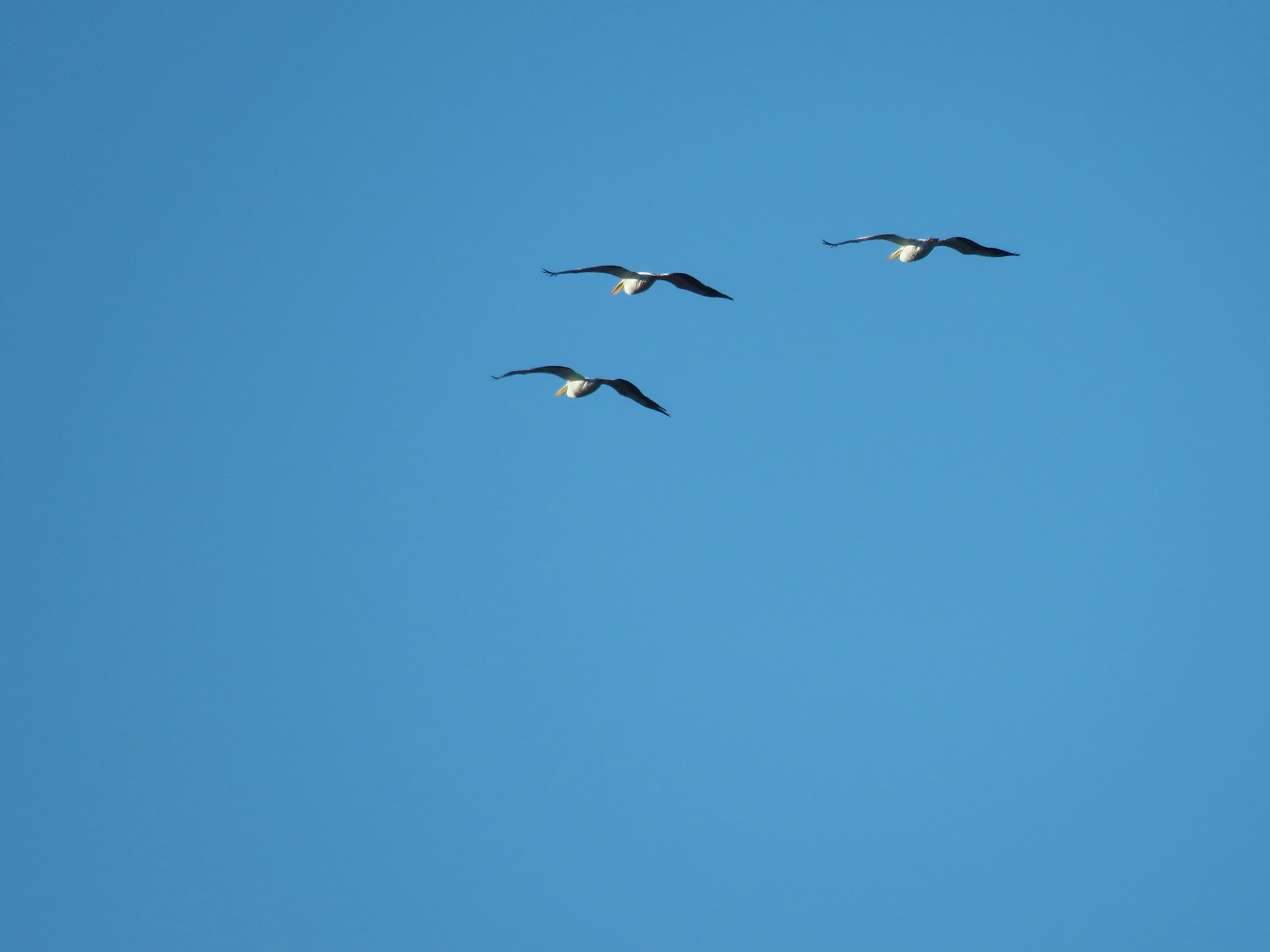

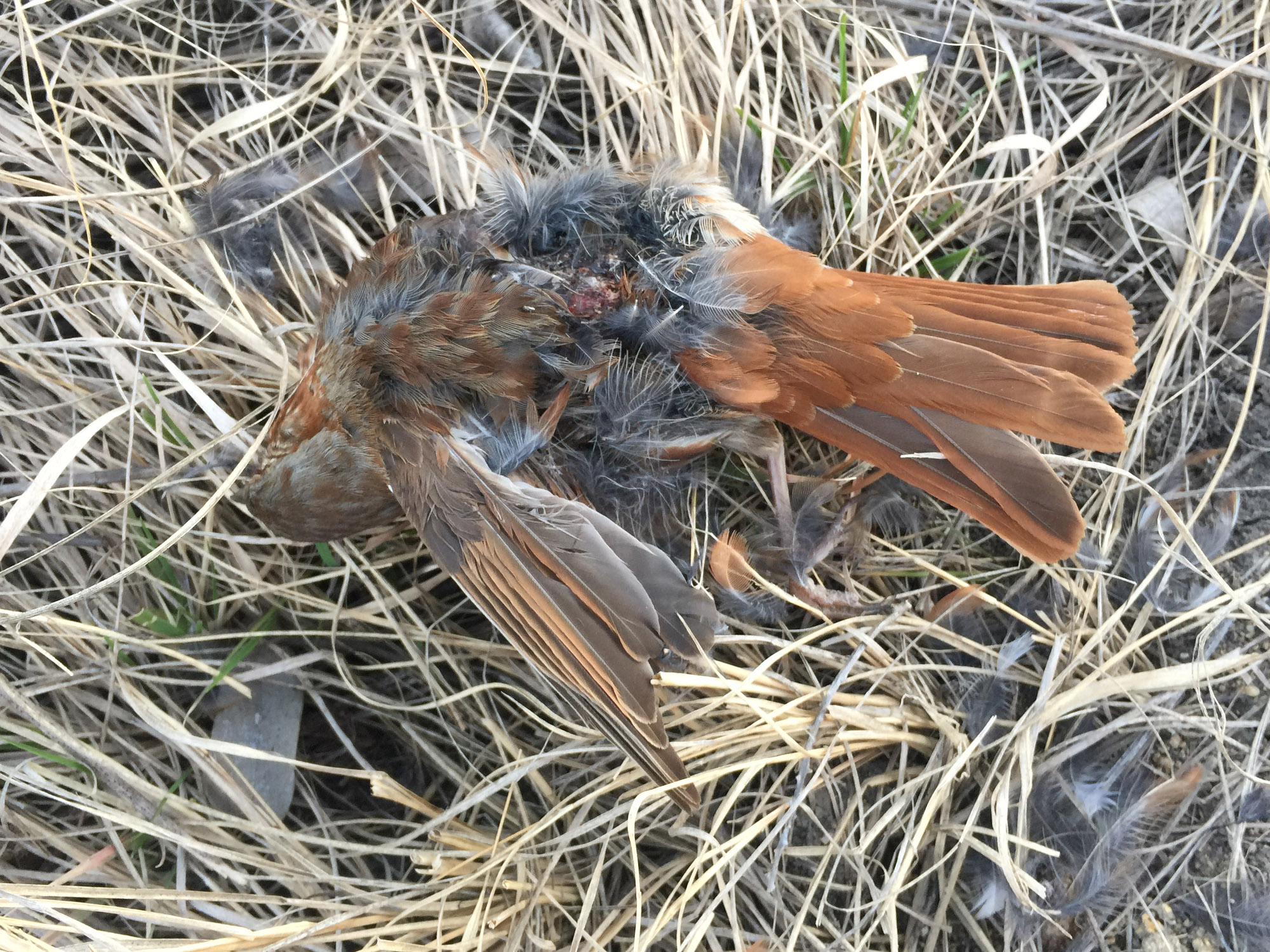
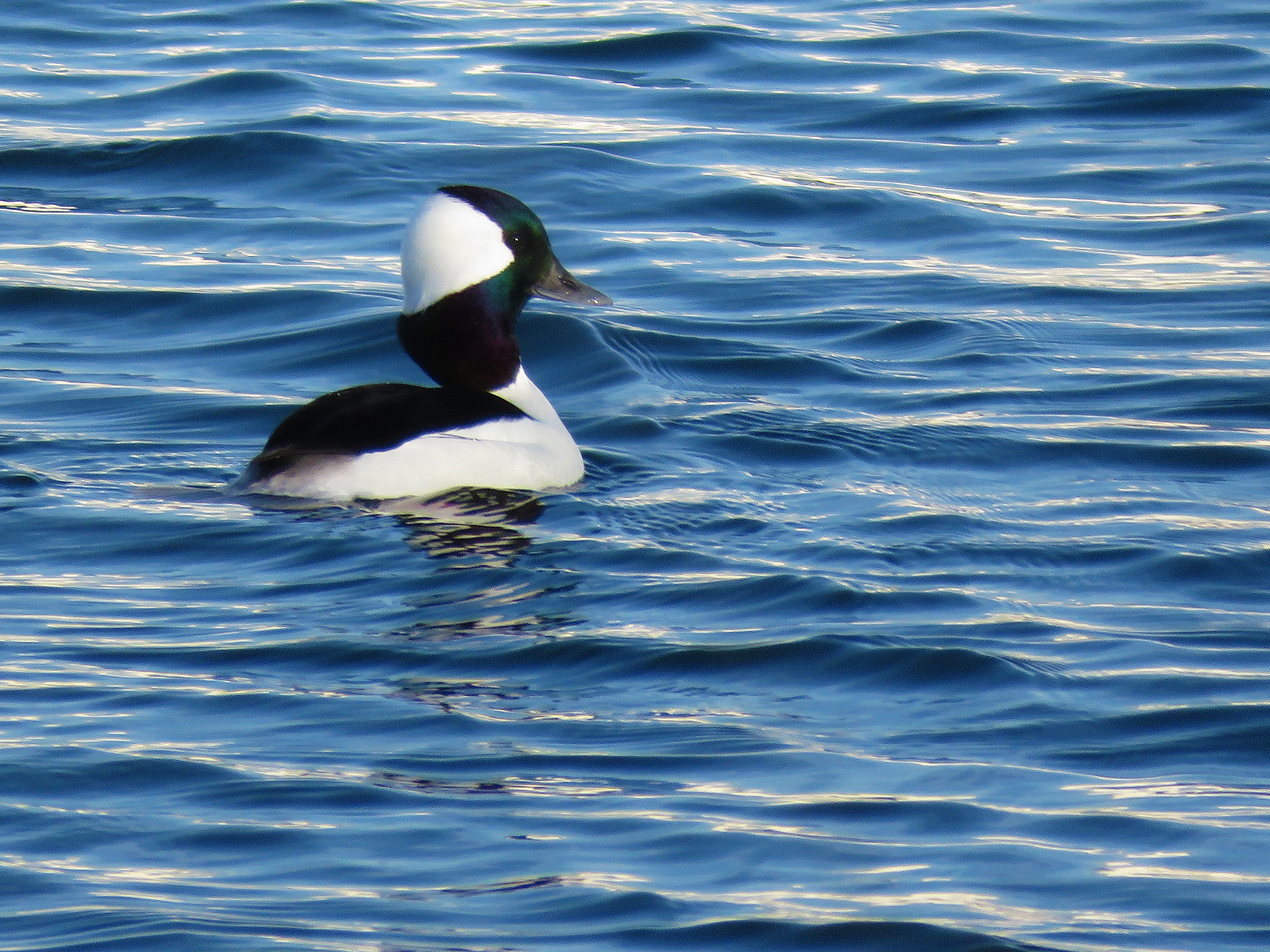
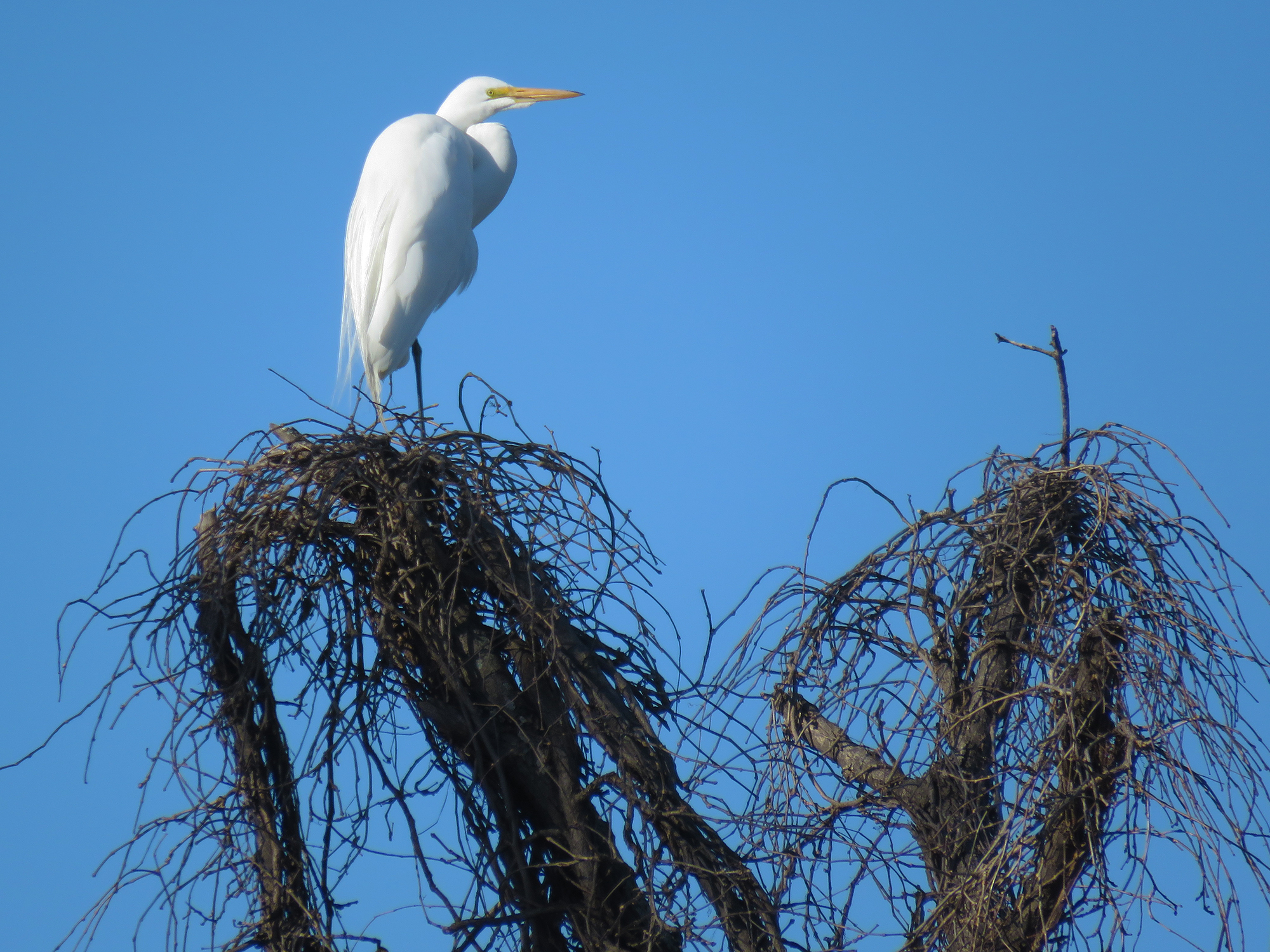
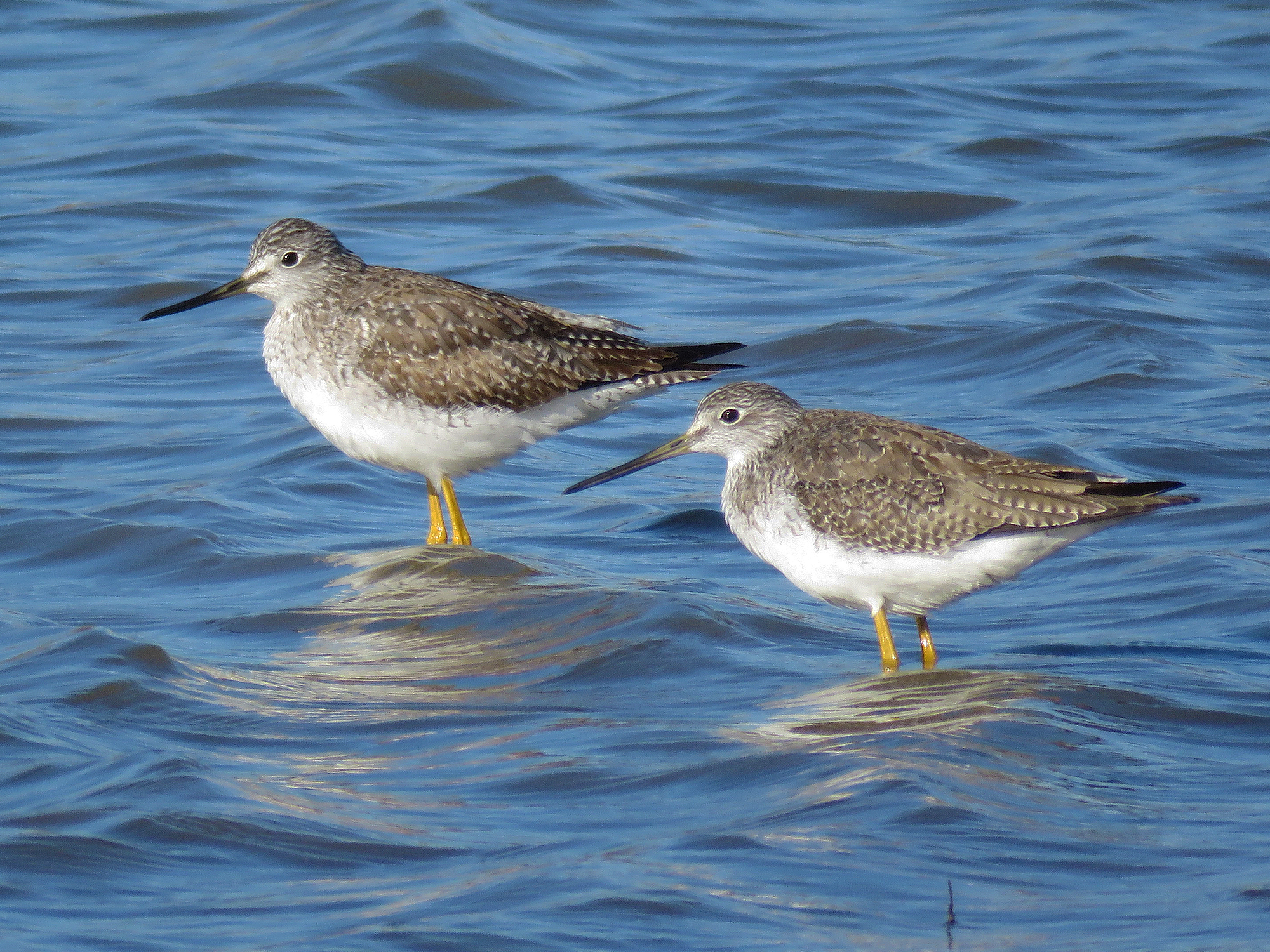

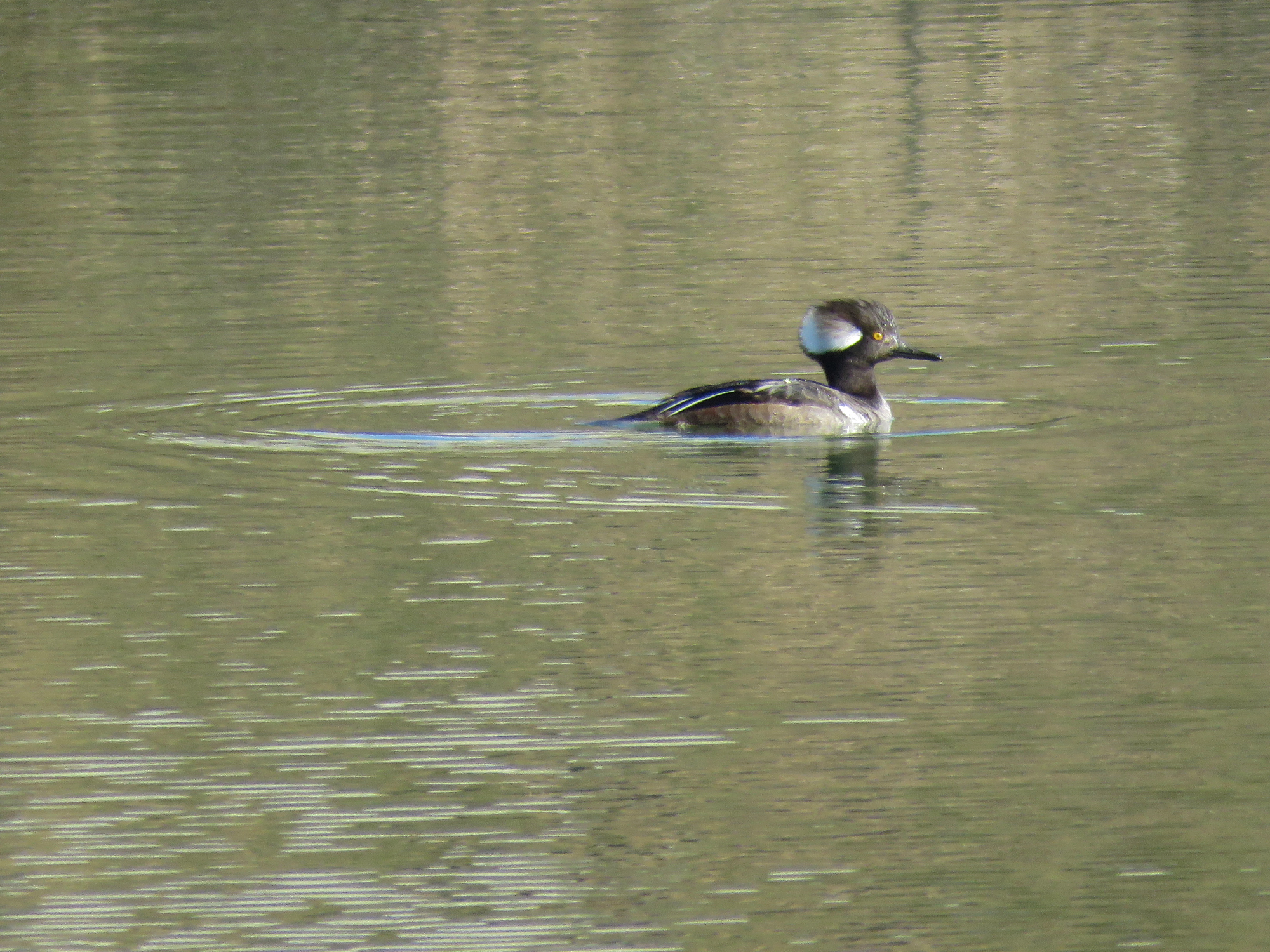

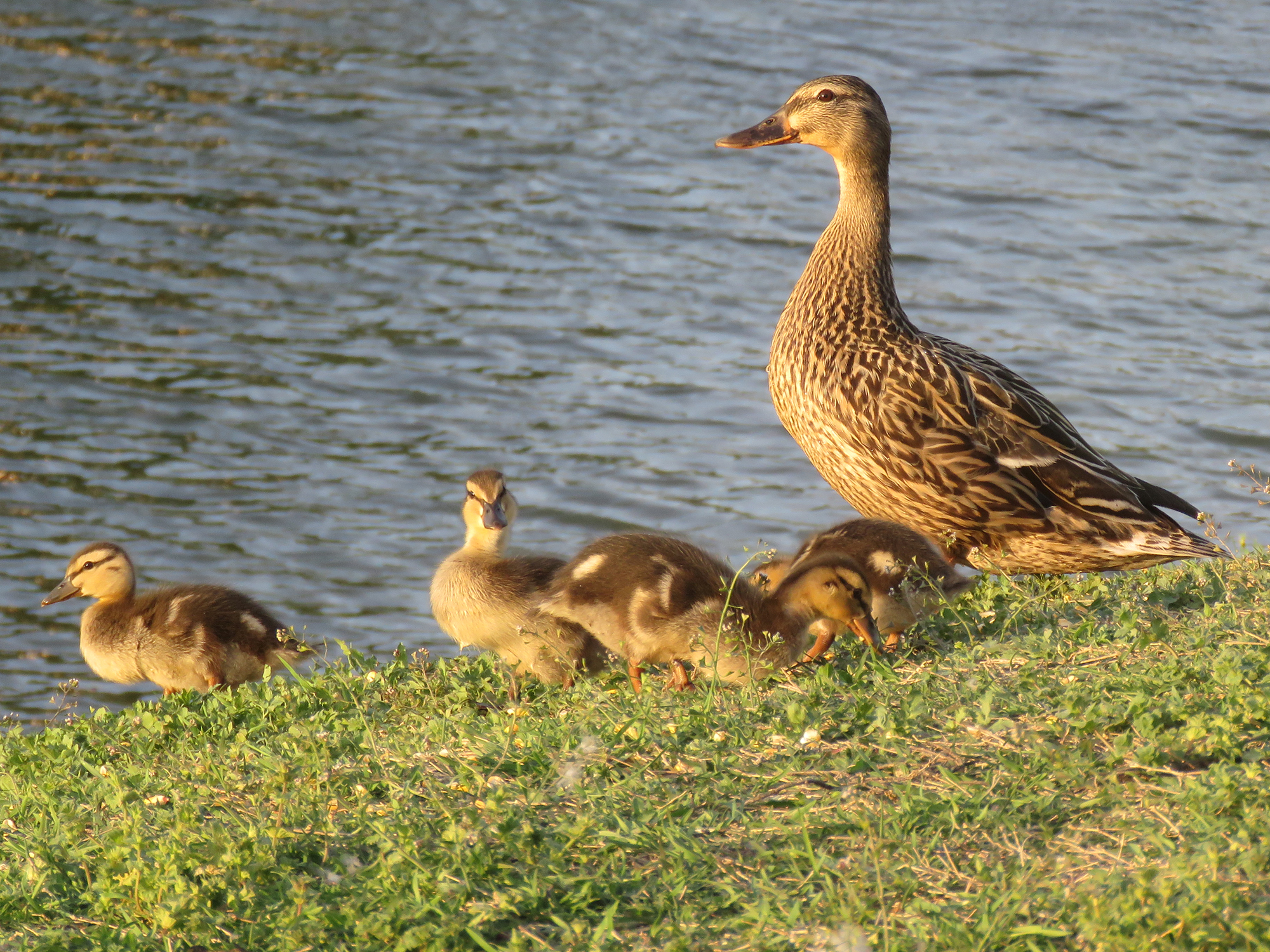
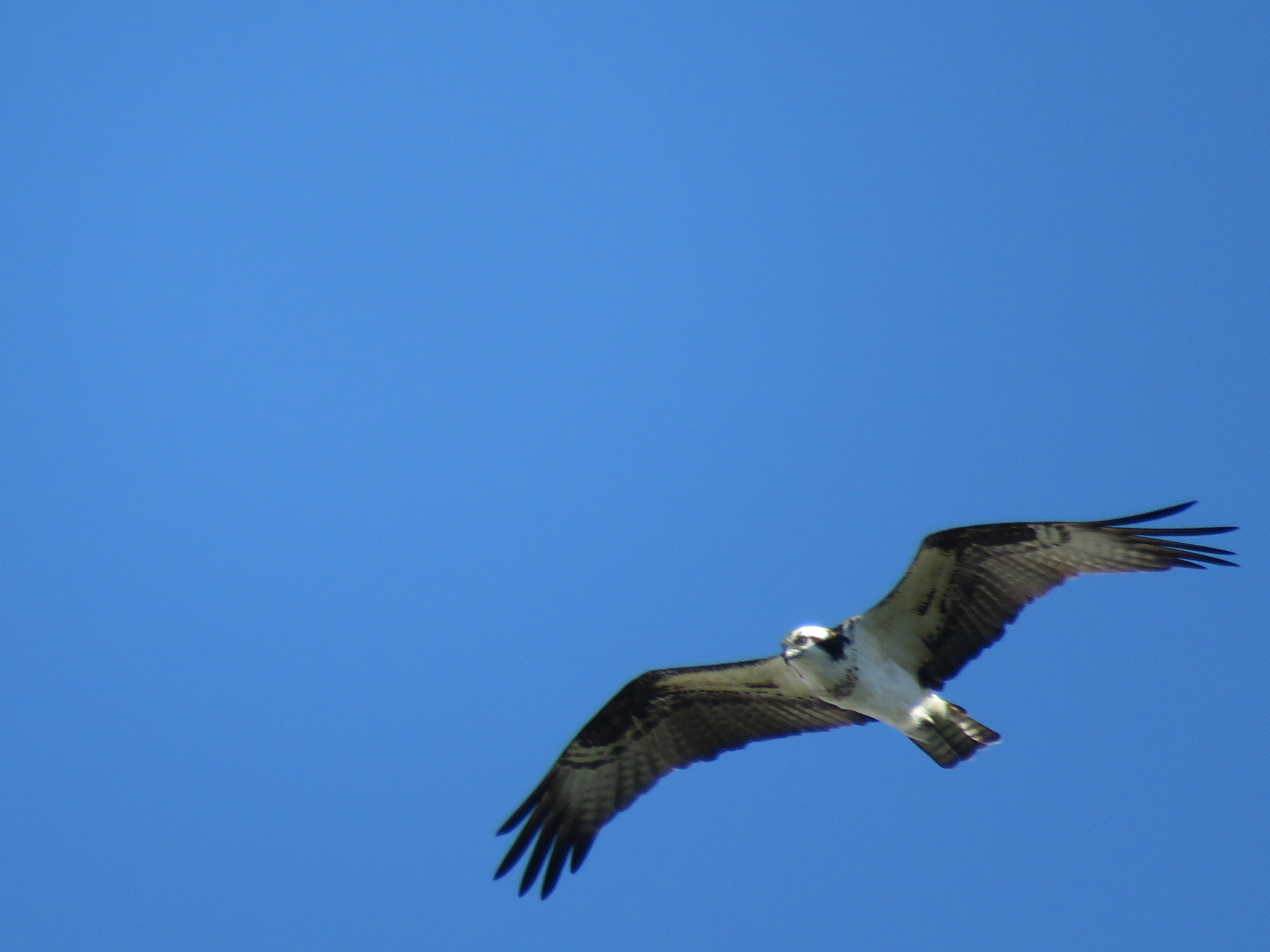
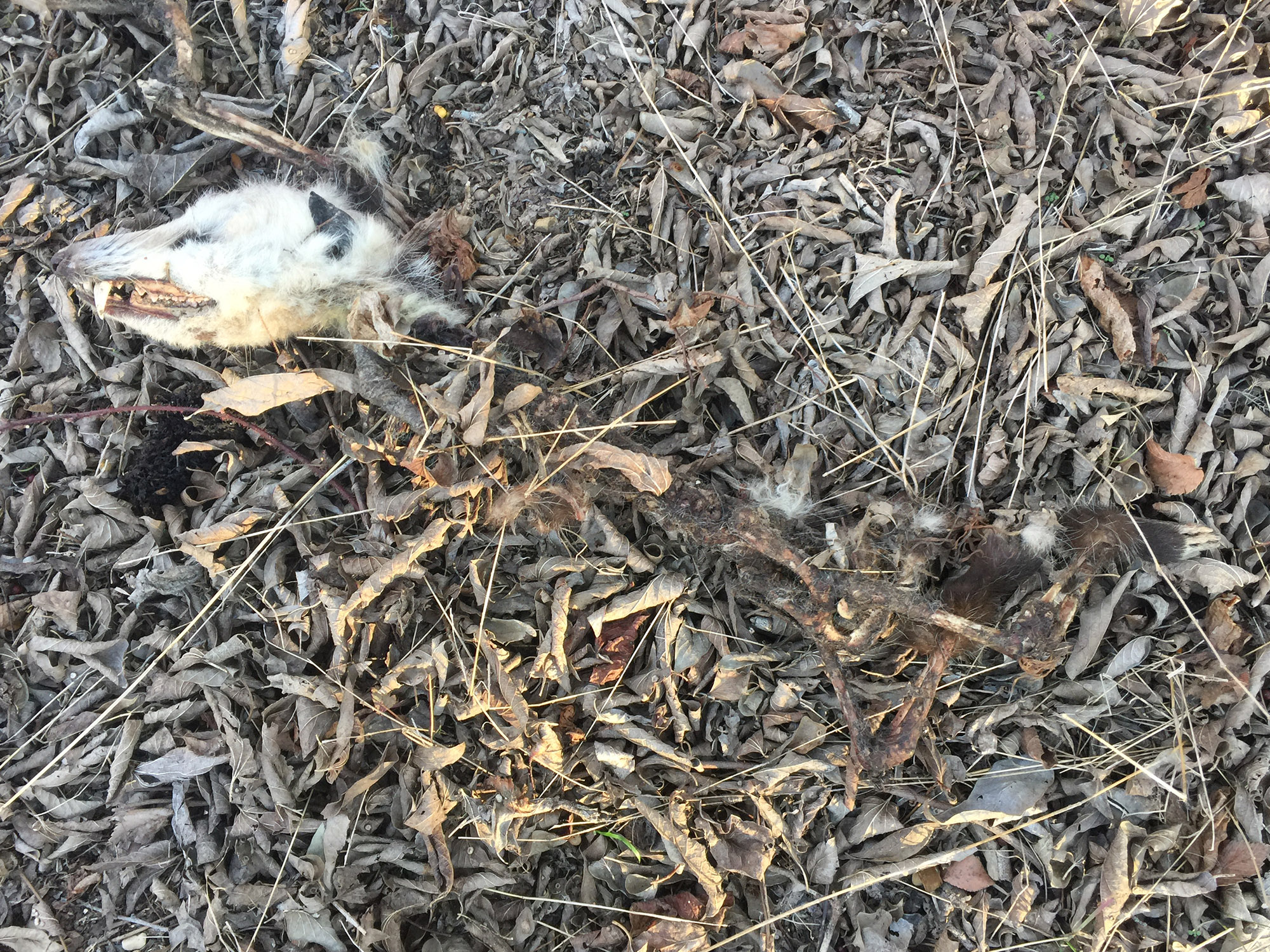
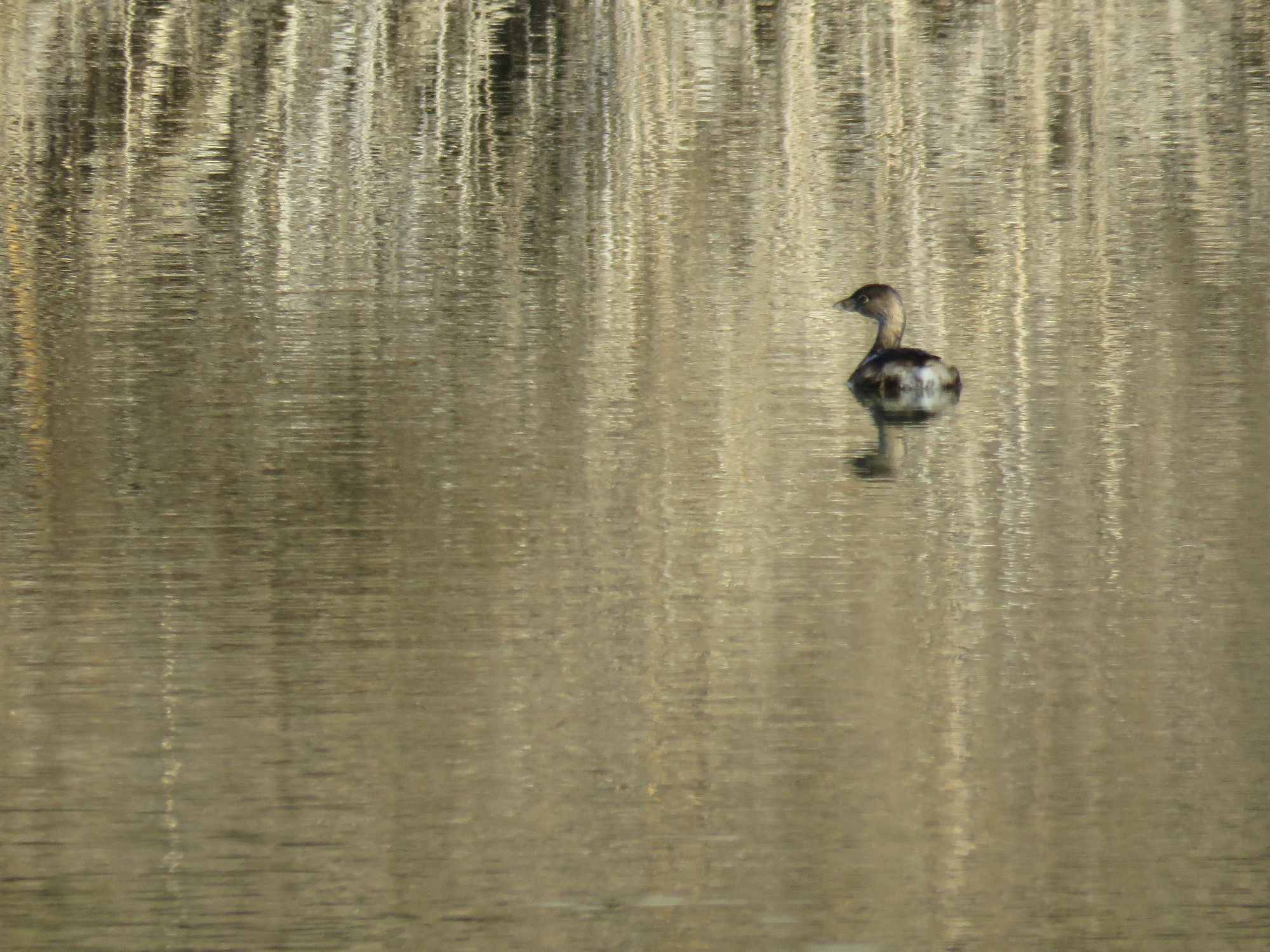
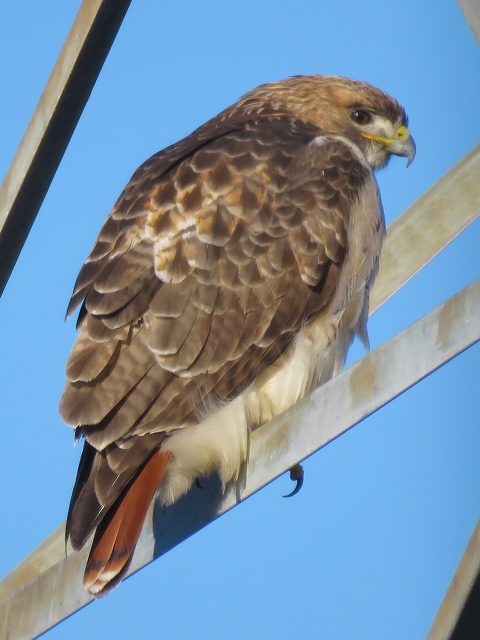

And then there was this little American Pipit. I noticed an unusual number of these guys this winter. They seemed most interested in spending time in manicured grass near small lakes and ponds. Here is what Wikipedia has to say about this intriguing song bird…
The buff-bellied pipit (Anthus rubescens), or American pipit as it is known in North America, is a small songbird found on both sides of the northern Pacific. It was first described by Marmaduke Tunstall in his 1771 Ornithologia Britannica. It was formerly classified as a form of the water pipit.
Like most other pipits, the buff-bellied pipit is an undistinguished-looking species which usually can be seen to run around on the ground. The rubescens subspecies (or American pipit) has lightly streaked grey-brown upperparts and is diffusely streaked below on the buff breast and flanks. The belly is whitish, the bill and legs are dark. The japonicus subspecies (or Japanese pipit) is darker above and has bolder black streaking on its whiter underparts; its legs have a reddish hue. The call is a squeaky sip.
The buff-bellied pipit winters on the Pacific coast of North America, and on the Atlantic coast from the southern North America to Central America. At least regarding the buff-bellied pipit, its wintering range seems to have expanded northwards in the 20th century and the birds seem to spend less time in winter quarters: in northern Ohio, for example, the species was recorded as “not common” during migration in May and September/October in the 1900s (decade), but today it is considered a “widespread migrant” in that region, found between March and May and from late September to November, with many birds actually wintering this far north. Asian birds winter mainly from Pakistan east to and Southeast Asia, with occasional birds found as far north as Yunnan and some in Japan apparently being all-year residents or migrating but a little. The American and Asian subspecies are rare vagrants to Western and Eastern Europe, respectively.
Like its relatives, this species is insectivorous. The breeding habitat of buff-bellied pipit is tundra, but outside the breeding season it is found in open lightly vegetated areas, similar to those favoured by the water pipit (A. spinoletta).



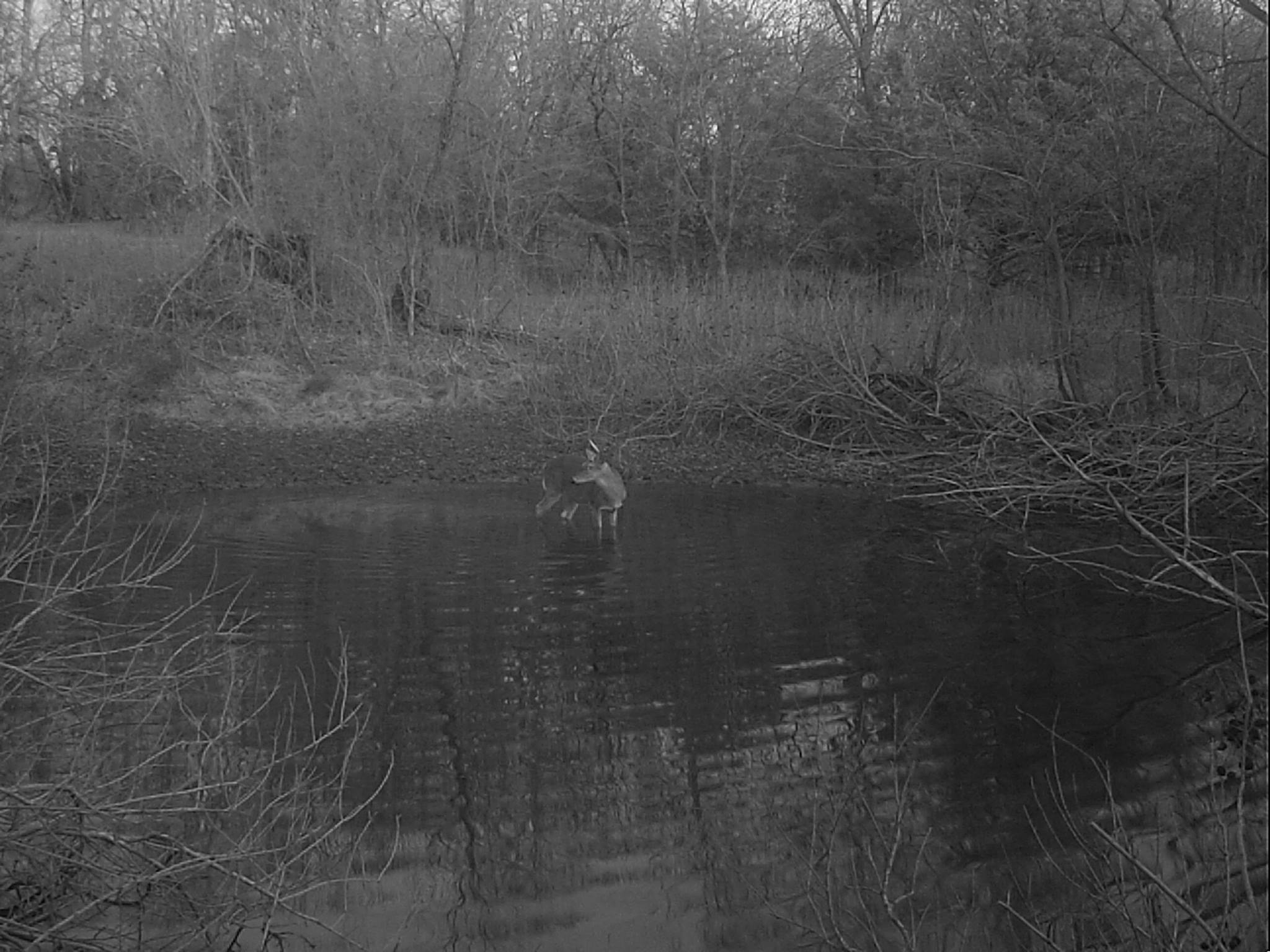

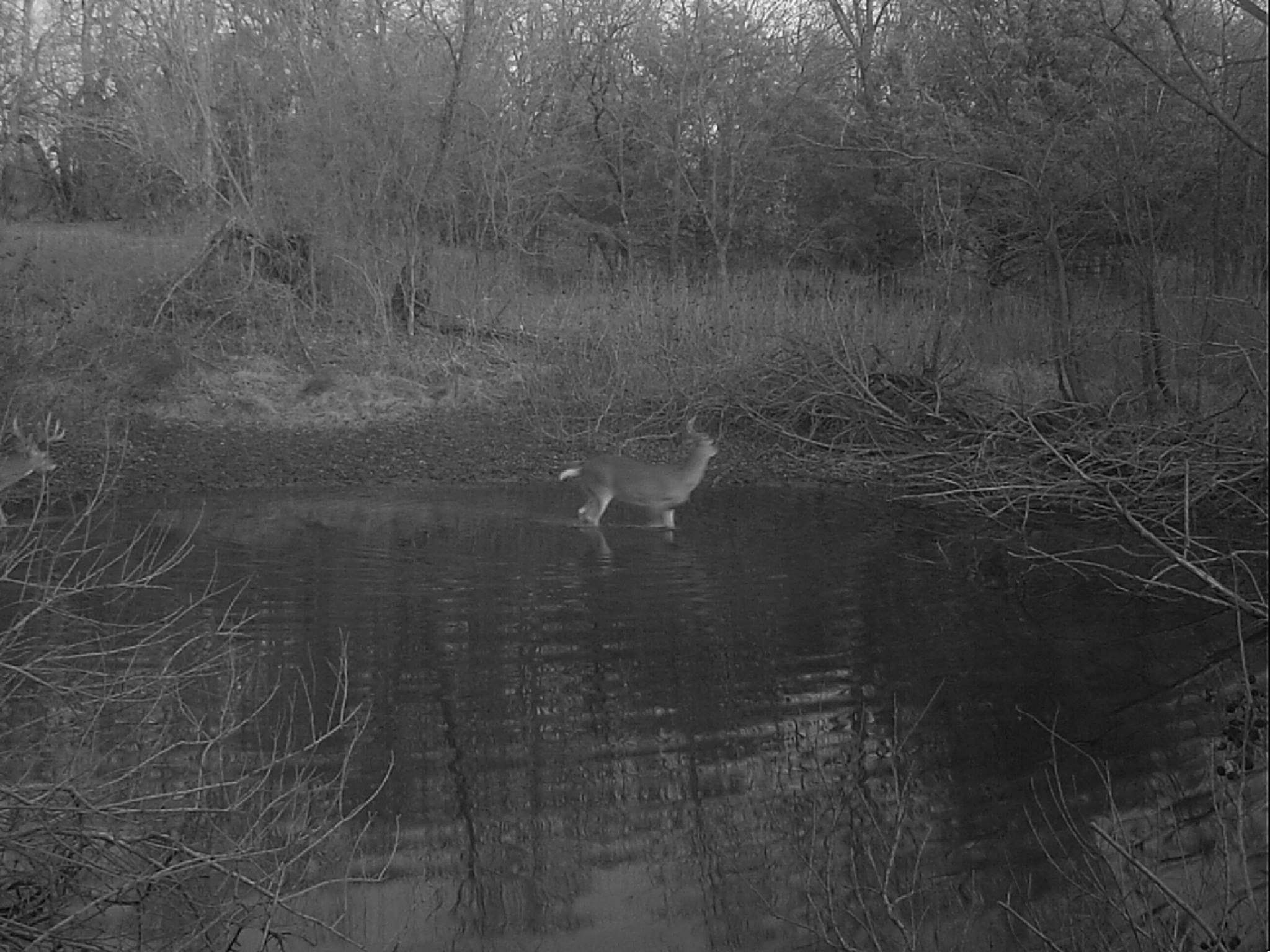


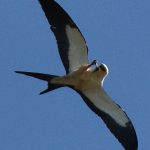

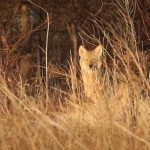
The deceased bird appears to be a Fox Sparrow by the way.